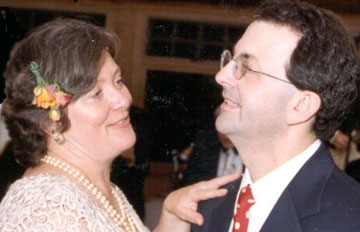The current technology for personal genome testing cannot tell you which of the two chromosomes, maternal or paternal, in a pair that an allele comes from. It can tell you that there is an AG at a specific position and a CT at the next position but not whether the A came from your mother or your father. This leads to much confusion about DNA segment matching.
The matches that these testing companies find are for stretches of DNA that are half identical regions (HIRs). This is due to the fact that a relative who shares a DNA segment from a common ancestor with you will match you along the chromosome you got from the parent who is descended from that ancestor. Thus your new relative will match you for half the alleles in those positions. Only a sibling will share fully identical regions of DNA. Click here for a page that has a picture of the DNA I share with my brother Shipley.
For example, if my Dad gave me AAAAAAAAAAA and my Mom gave me CCCCCCCCCCC then I would seem to match absolutely everyone on that segment because every position has both an A and a C. So an ACACCAACCAC or a CCAACCCACA looks like a match, but only those with an AAAAAAAAAAA or a CCCCCCCCCC would be real matches. This is simplistic and the segment runs used for matching are much longer than this to try to avoid that sort of false matching. Also note than when your testing company shows an AC it is really an AT and a CG but just one of the known pairing is shown for brevity.
The term for a real match is IBD, which is an abbreviation for Identical By Descent. The term IBS means Identical by State which would apply to any false match. So in our example, the CCAACCCACAA match would be considered IBS.

